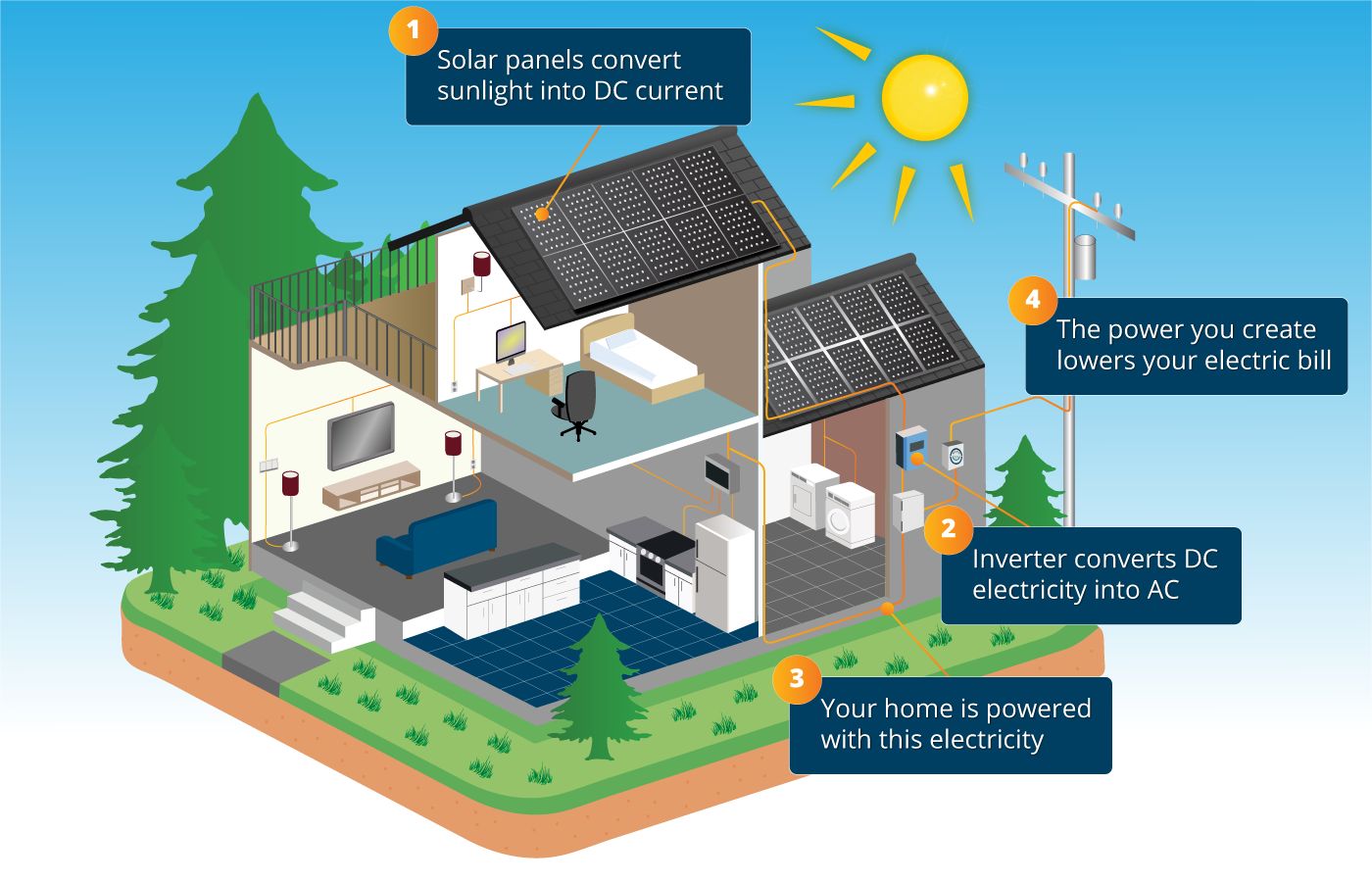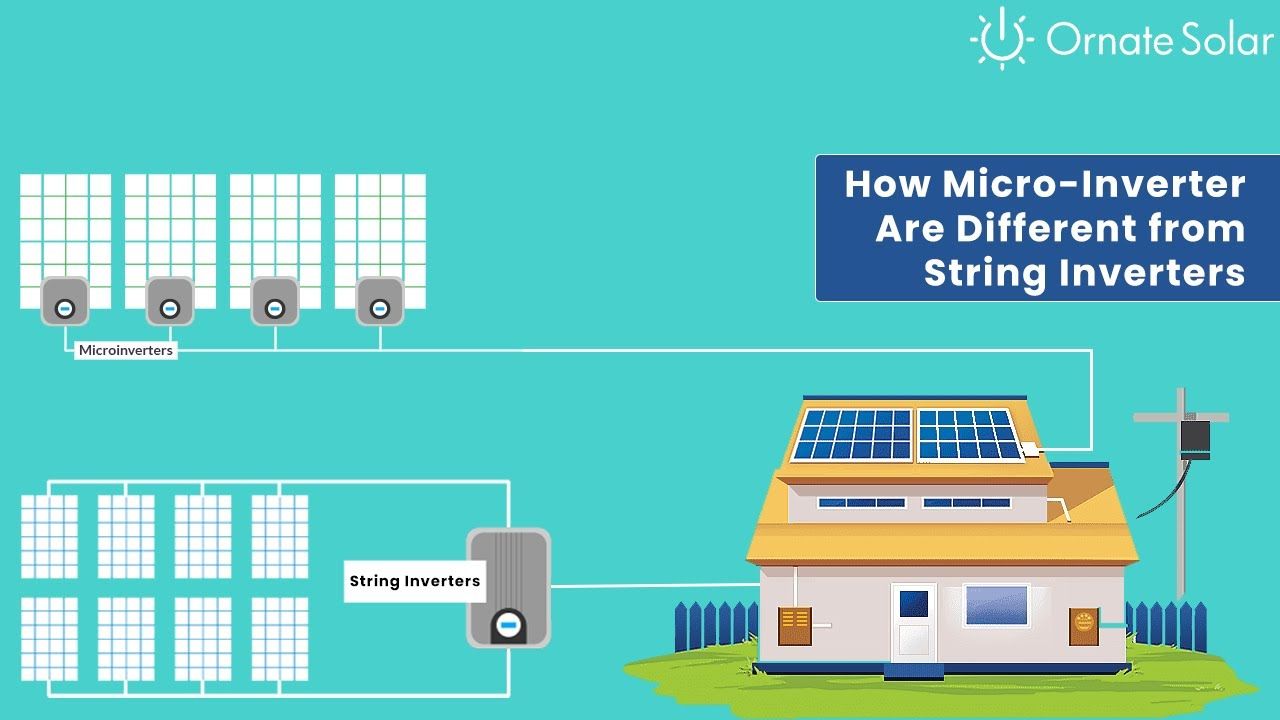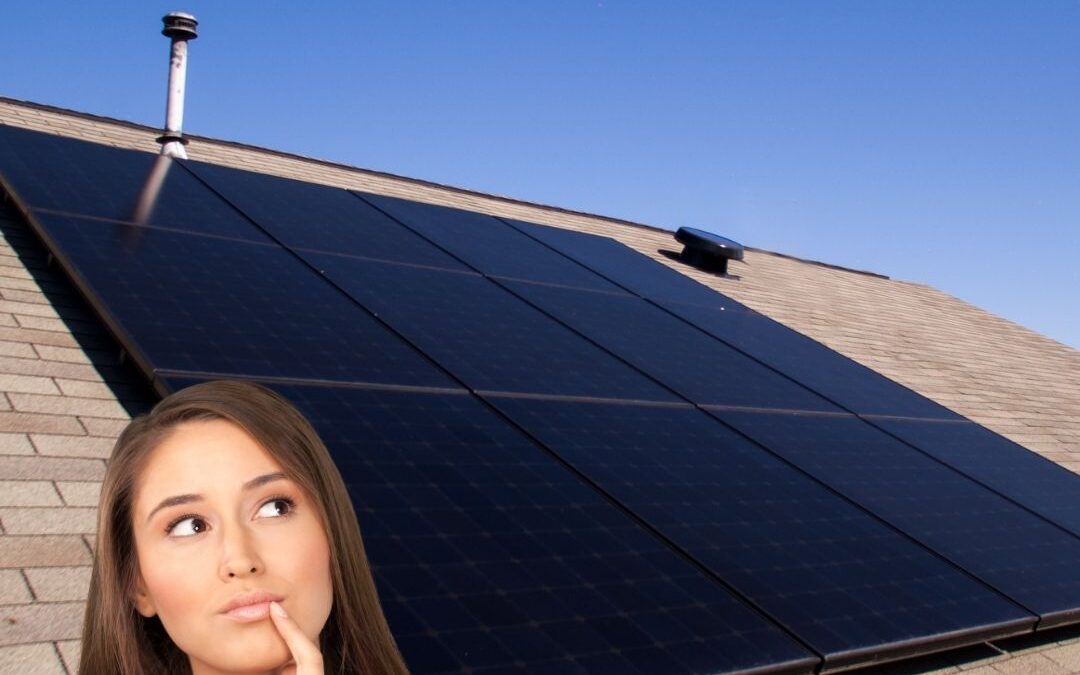What Are Inverters?
Investing in a solar system is a big decision that requires a consultation, system design phase, and installation. Most solar energy systems have a warranted lifespan of 25 years, so it’s imperative that customers choose the right components that match with what they want to get out of their system. Most customers focus on components like panels and energy storage units, but inverters play a big role in how a customer keeps track of their system’s production.
Inverters convert the direct current (DC) of energy that solar panels produce from sunlight into alternating current (AC) of energy that can be used in the home for appliances and electronics. While this function may seem pretty basic, there are two main types of inverters that customers can choose from.

Optimizers vs Microinverters
The two main types of inverters that residential customers tend to go with are optimizers and microinverters. Optimizers have a central inverter that is located on the side of the house while microinverters have smaller inverters located underneath each panel.
One of the main benefits of choosing an optimizer for your solar energy system is the Maximum Power Point Tracking (MPPT). MPPT ensures that customers get the most out of each panel, even if some panels are shaded at any point during the day. A SolarEdge Single-Phase Inverter allows for panel level monitoring and home energy consumption monitoring so customers can see how their produced energy is being used. The SolarEdge Single-Phase Inverter also uses one main inverter on the side of the house that is easy to install, easy to troubleshoot, lightweight, smaller in size, and high in efficiency. As DC energy gets converted to AC energy on the side of the home that work is done usually in a cooler temperature which makes the inverter work more efficient and increases the product life. SolarEdge uses string inverters + power optimizers that help maximize production from panels. On top of production, SolarEdge inverters utilize a feature called SafeDC which shuts down DC voltage in the event of an emergency.
A primary benefit of choosing microinverters for your solar energy system is that microinverters convert DC energy to AC energy directly underneath each individual panel. Having inverters located underneath the panels allows for monitoring of each individual panel. If one microinverter failed, other microinverters in the system would stay active, allowing customers to easily identify which panel is having issues. Enphase Microinverters have a feature called Sunlight Backup which stores energy in each microinverter in case there is a power outage. With Sunlight Backup, customers keep their low power loads on during an outage without the need of an energy storage unit. During the case of a system expansion, additional microinverters attach underneath new panels without the need to make adjustments to other microinverters in the system.

Photo courtesy of Ornate Solar
Which Inverter Option Is Best For My System?
Choosing between different system components can be a challenge as each solar system is unique depending on what the customers needs are. One system may benefit from a SolarEdge Single-Phase Inverter while the other may benefit from utilizing Enphase Microinverters.
Customers installing a larger solar system would benefit from using a SolarEdge Single-Phase Inverter as the system requires fewer units than microinverters. Having a centralized inverter vs individual inverters makes for a cost effective solution. Along with cost, SolarEdge Single-Phase Inverters utilize power optimization that has a track record of being reliable since they’ve been on the market for a long time. Besides historic success, SolarEdge Single-Phase Inverters are warranted out-of-the-box for up to 12 years with the option to upgrade to 25 years.
For smaller systems with more complex designs and intermittent shade, customers would benefit from using Enphase Microinverters. Since microinverters don’t use string inverters during the installation process, systems have more room for different array layouts and expansions down the road.

Interested In Going Solar?
Investing in a solar energy system means you’re investing in energy independence that brings savings and clean energy down the road. Would you like to find out if solar is right for you? Click our link here to get in touch with a solar energy consultant who can help get you the right system with the right components for a smart, reliable, solar investment.


